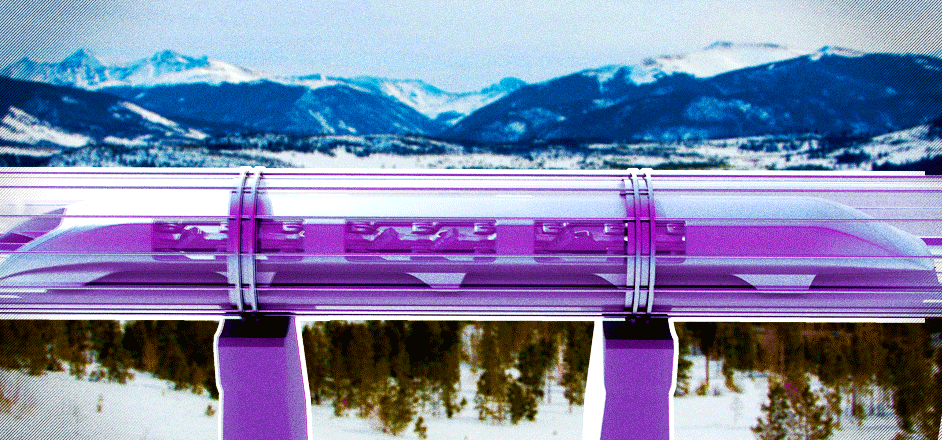Skiers and snowboarders are likely familiar with the chaotic morning and afternoon scene on I-70’s beautiful mountain corridor during snowy seasons.
Year by year, traffic intensifies, thickening up and slowing down as Colorado’s population erupts. It’s the 7th fastest growing state in the nation, after all, and infrastructure is struggling to keep up with the breakneck growth.
It’s a problem with no simple solution — short of a science fiction-type technology. Something like an airtight loop blasting thousands up and down the ridge at breakneck speeds.
Hyperloop One, a California based tech company, recently announced the top 10 finalists for its “Global Challenge” — and a team from Colorado was among them. Team Rocky Mountain Hyperloop, a partnership between the Colorado Department of Transportation (CDOT) and the engineering firm AECOM, developed a proposal for a route that could eventually connect Pueblo to Cheyenne, and Denver to Vail.
“Think about that ability and capacity to move people with a much smaller [environmental] footprint,” says Alan Eckman, the Vice President of AECOM and one of the company’s leaders in pursuing the project. “That is a very disruptive concept, and one that could make some dramatic changes in the landscape as we continue to grow in Colorado.”
Fewer cars on the road means fewer traffic accidents, further reducing traffic jams and — more importantly — saving lives. In 2016, there were 608 traffic related deaths in Colorado, a statistic CDOT is working aggressively to curtail. Amy Ford, Director of Communications at CDOT, believes Hyperloop could dramatically lessen the impact of perilous mountain driving.
“Getting people off the road and into a different mode of travel, moving cargo differently, absolutely that can have an impact on our safety,” she says. “We’re here to save lives and to make people’s lives better when they travel … and Hyperloop could be a big piece of that.”
“That is a very disruptive concept, and one that could make some dramatic changes in the landscape as we continue to grow in Colorado."
Naysayers of the project claim it would simply be too much of a burden for the small mountain towns to adapt. Sending thousands more up the hills in such a convenient matter would mean larger crowds in areas that are limited by geography. Though that isn't without its solutions either.
“I think that any time you’re talking about getting more folks up into the high country, up into Summit County and beyond, with a quick mode of transportation, that’s exciting,” Chris Linsmayer, of Colorado Ski Country USA, says with optimism. “If [it] became a problem, we would cross that bridge and look at unique and possible solutions when we got there.”
This is all a long way away, of course. Right now, AECOM and CDOT are working on a feasibility study — to see if it would actually work — aimed to examine the economic benefits, regulatory environments, costs, routes and strategies for implementation.
“I heard someone at CDOT explain that if we’re doing a 100 step process towards project development, we’re probably at step 5 out of that 100,” says Eckman.
But the idea has generated a lot of excitement, and has people thinking about newer, faster, more efficient modes of transportation everywhere. The more Team Rocky Mountain Hyperloop’s proposal excites Colorado’s imagination, the closer a hypothetical turns into reality.
—–






Leave a Reply
You must be logged in to post a comment.